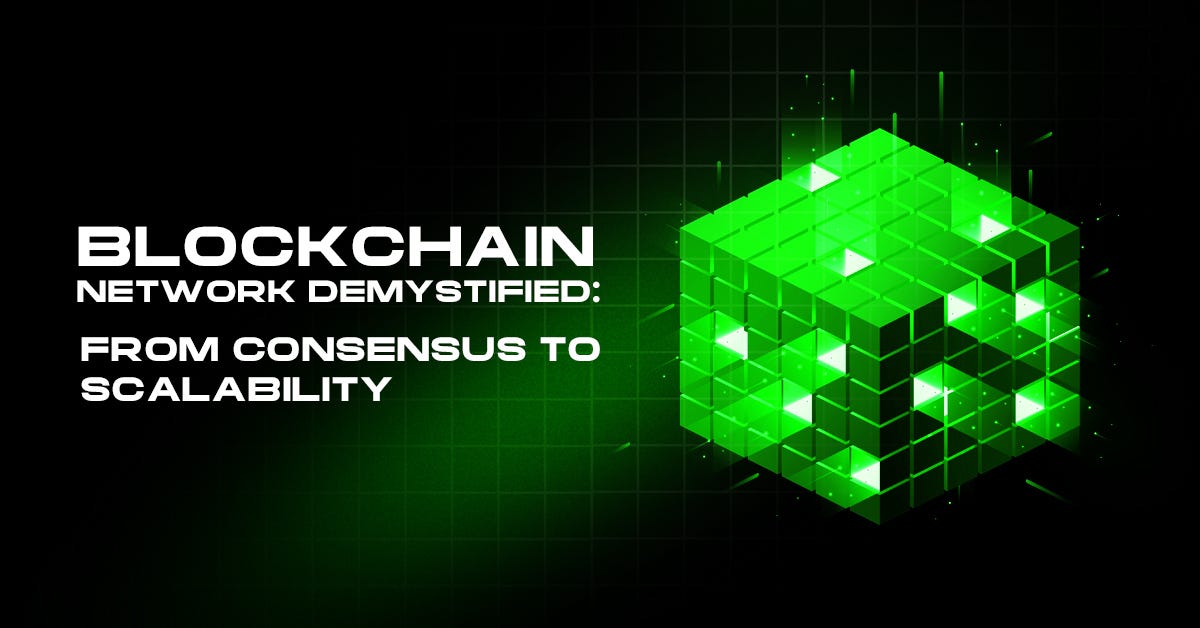Blockchain Network Demystified: From Consensus to Scalab
How does a blockchain network turn secure, scalable, and dependable? This is the drive behind contemporary decentralized networks. A blockchain network enables cryptocurrencies, intelligent contracts, and decentralized finance.
It provides trust without relying on some central authority. In this article, we’re going to see how such networks function. We’ll begin with consensus, slog through architecture, and conclude with scalability. Buckle up and let’s dispel all phases of a blockchain network.
Ever wonder how a blockchain network functions behind the scenes? From consensus to managing huge amounts of data, it’s more than electronic money and hype.
Here’s an in-depth breakdown of the inner workings of blockchain architecture, including smart contracts and scalability. Tech-y or curious mind, this is your guide to getting an understanding of it all.
Understanding Consensus Mechanisms
Consensus mechanisms are the blockchain network backbone. They decide on how the nodes will agree on the integrity of data before incorporating it into the ledger.
Two of the most widely used mechanisms are Proof of Work and Proof of Stake. In PoW, miners race against each other to solve intricate computational problems.
This is what verifies transactions and adds new blocks to the chain. Although PoW is extremely secure, it is equally power-consuming.
Bitcoin employs PoW to authenticate its consensus.
PoS chooses validators that rely on the amount of cryptocurrency they have and are willing to “stake” as collateral. It is more power-efficient and friendly relative to PoW.
Ethereum also uses PoS to make it more power-efficient and renewable.
The other types of consensus include the Delegated Proof of Stake (DPoS) which allows token holders to vote for validators to sign transactions and Practical Byzantine Fault Tolerance (PBFT) applied in permissioned networks for fast agreement.
Each type of consensus serves varying priorities and requirements of a network. The right mechanism plays an imperative role in making a blockchain network’s speed, security, and eco-friendliness.
Trust and smooth functioning among all parties ensure proper consensus.
The Role of Blockchain Infrastructure
Blockchain infrastructure refers to the backbone of an effective blockchain network. It comprises essential elements like nodes, validators, APIs, and smart contracts.
Nodes take a vital position in holding copies of the ledger. They validate and forward transactions for broadcast purposes, guaranteeing accuracy and security.
Nodes are of two categories: full nodes and light nodes. Full nodes maintain a complete copy of the whole blockchain, and light nodes maintain only required information in an effort to conserve resources. Both contribute to decentralization and network strength.
Peer-to-peer communication is a necessary part of the infrastructure as well. It enables nodes to securely and efficiently exchange information without the need for a middleman.
APIs are bridges that enable applications to speak with the blockchain network and access its data.
Lacking an untrusted and frail blockchain infrastructure, the network cannot operate efficiently or accommodate increasing demands. Such a robust foundation underpins security, speed, and scalability throughout the system.
Blockchain Database: The Ledger of Trust
A blockchain network consists of a distributed database. The database contains transactions in blocks. A block refers to the next one. The result is an immutable and chronological collection of records.
This creates an immutable history. Changing previous data involves rewriting all the blocks that are connected. Such tampering is essentially impossible.
As compared to the traditional database, a blockchain system is completely transparent. Everyone gets to see the information. But nobody can change it. That provides trust in decentralized systems.
Every transaction gets encrypted. Users get logged in using public and private keys. That keeps sensitive information secure and verifies user identity.
The Blockchain database is simple to audit. Its architecture supports trust by verification. Data moves over a secure, distributed ledger. Every transaction is time-stamped and linked.
This architecture assures accuracy and durability. It drives monetary records, supply chains, and digital identities with integrity and trust.
Smart Contracts and Blockchain Legal Contracts
Smart contracts perform activities in a blockchain network…
Comments
Post a Comment